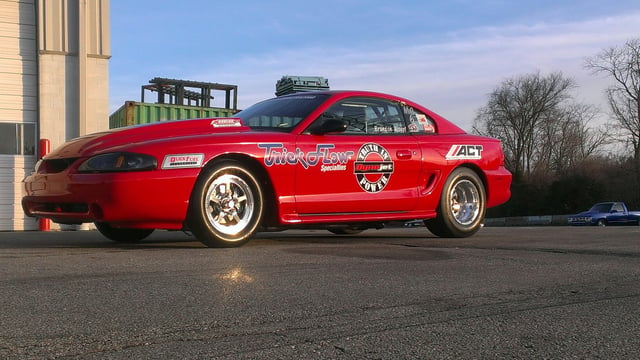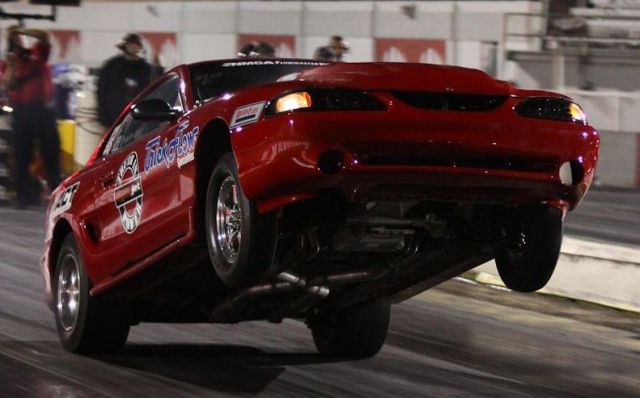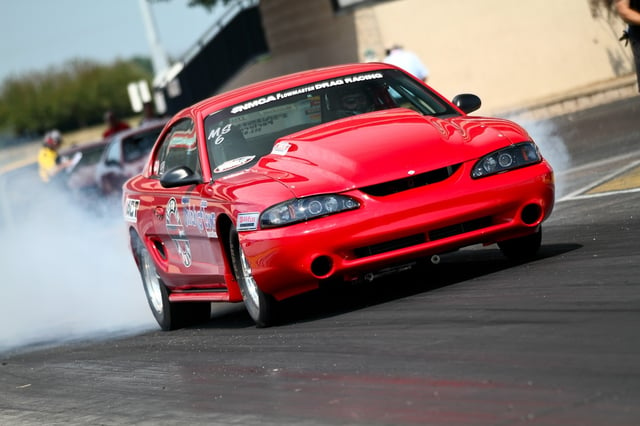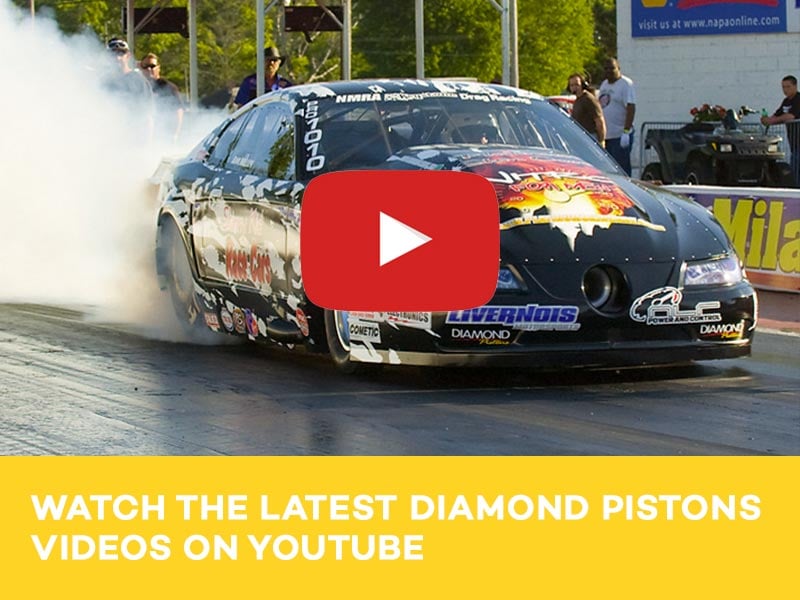Brandan Alsept is an NMRA and NMCA champion and has developed a reputation for wheel-standing launches and win lights. We go behind the scenes with him to talk drag racing and his recipe for success.
“All the auto dealers in my town were on one street, and the Ford dealership was the first one in the line,” Brandon Alsept recalled with a chuckle. That positioning of the Blue Oval outlet would end up having a profound impact on the future of this championship-winning drag racer from Cincinnati, Ohio. “I was an 18 year old kid at that point and I wanted to buy a new car. I was actually on my way to go buy a ’99 Camaro SS, but I figured I’d stop by and just check out the Mustang GT.”
Though the Ford was down on power versus the Chevy, there was one crucial deciding factor that tipped the scales in the Mustang’s favor. “I want to say it was about fifteen grand cheaper,” he explained. “As a teenager that was a pretty big difference.”

Somehow Alsept has managed to keep that same ’98 Mustang GT all this time, setting records and taking titles with it along the way. But the original idea wasn’t to have a championship-winning drag car, he said. “Like any kid, early on I just started throwing on the typical bolt-ons and playing around with the car. A few years later I discovered the NMRA series and I attended a few races. Class racing looked interesting to me, so I decided to throw my hat in the ring, and it’s been a headache ever since!”
Over the years Alsept’s ’98 Mustang GT has been through a number of different configurations, but perhaps the most notable thus far has been the setup he ran in the NMCA’s Mean Street and the NMRA’s Pure Street classes. “Pure Street was a fairly open naturally-aspirated class, so that allowed us some room to work,” Alsept said.
Under the hood, the loadout of the Mustang’s 4.6-liter two valve mill included a pair of Trick Flow cylinder heads, an Edelbrock intake and carburetor, custom-ground Bullet camshafts, Eagle connecting rods, and a set of Diamond pistons with Total Seal rings. “Even at that point we still ran a stock crankshaft, mainly because it was the lightest one around,” he noted.

“I worked with Nick and Mike at Diamond on the pistons – I think we ended up with around 14:1 compression. We ran that exact same set of pistons for four seasons with zero issues. That’s actually one of the few things we never had a problem with.”
Hooked to that 4.6 was a Tremec TKO 500 5-speed manual gearbox which sent the power to the rear wheels through a 9-inch rear end. “The fastest we ever went in competition with that basic setup was 9.85 in Mean Street and a 10.00 in Pure Street,” he said. “But during the fall of 2012, we took some weight out of it, switched to Q16 fuel, and took it to a local test and tune.” Alsept would make history at that event, clicking off a 9.65-second pass at 138.39 MPH and setting the record for the quickest and fastest naturally-aspirated two-valve pass ever in the process.

“My race routine is pretty typical – mainly just going over the car, making sure everything is as good as it can be, then getting strapped in and focused,” he told us. “As soon as the burnout starts I get in the zone.”
Alsept says his team is basically a rotating roster of buddies. “It always varies,” he explained. “Mostly just comes down to who has the time to go racing with me that weekend. There’s sort of a pool of people who are involved, but guys like Matt Callahan and Chuck Parker are part of the “core” group, I suppose. They race too, so it really comes down to who’s racing that weekend. We try to help each other out as much as we can.”
These days Alsept has his sights set on another class, one which undoubtedly presents a new set of challenges. “It’s looking like we’re going to end up in Factory Stock,” he said. “The rules in that class are more strict – we have to use an OEM-style Coyote 5.0, stock-style pistons, unported heads, stock camshafts, and minimum weight for our combination will be 3,325lbs.”

You might expect that rule set to be a significant hit to ETs compared to the more open classes Alsept competed in in the past. “With Factory Stock there’s not a whole lot you can do with the engine,” he said. “And this will be the heaviest I’ve ever had a race car. But believe it or not, the Factory Stock and Coyote Stock classes are actually catching up to the performance from the Pure Street days.”
Alsept already has some experience with these more-restricted classes, too. “I was helping out a friend who raced in Factory Stock for just about as long as I was racing in Pure Street,” he explained. “We actually won four championships during that time. Since the Coyote came along it’s made a lot of those older combinations kind of irrelevant, so he sold off his engine and started dabbling around in some other stuff, but I’ve always liked the class.”

Alsept expects the transition to require a bit of time to get everything dialed in. “Basically we’re going to go out with what was formerly our sealed engine for the Coyote Stock class and kind of feel the car out, get some of the early bugs worked out through the remainder of the season, and target the full season for 2019 with a little more purpose-built engine and some tweaks here and there.”
You might expect that another incentive of moving to a more factory-focused class would be a reduction of expenses, but Alsept says that’s not really the case either. “Oh, you’ll find places to spend the money,” he said. “Even the cheap classes aren’t cheap!”

